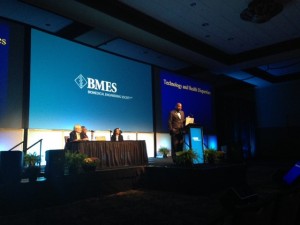Last month, I was attending the 111th meeting of the Advisory Committee to the Director (ACD) at the NIH campus in Bethesda, Maryland. This was my last ACD meeting since I was elected as a member of ACD in 2013. In an effort to ensure that NIH senior management is getting the most rigorous and experienced guidance, the NIH director Francis S. Collins, M.D., Ph.D., created the ACD made up of academic and health care industry leaders. As a committee member, my duty was to make recommendations concerning program development, resource allocation, NIH administrative regulation and policy, and other specific or general aspects of NIH policy. The committee members also review and make recommendations on applications for grants and cooperative agreements for research and training for projects that show promise of making valuable contributions to human knowledge. It was truly an honor to serve as a member of the ACD. It has been a great pleasure working with Dr. Collins and all members of ACD.






